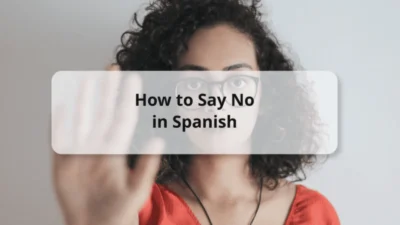Learning how to say hi in German is a simple and useful way to start a conversation. The most common word is “Hallo,” which works in almost any situation — with friends, family, or strangers. German greetings can be casual or polite, and knowing the right way to say hi helps you sound friendly and natural.
Whether you’re traveling, learning the language, or meeting German speakers online, using the correct greeting is the first step to making a good impression.
Different situations call for different greetings, so knowing a few alternatives will make you sound more confident.
Say Hi in German
Let’s explore 15 real ways to say hi Germany, complete with example conversations and cultural insight.
🔹 15 Ways to Say Hi in German
| No. | German Phrase | English Meaning | Use / Tone |
|---|---|---|---|
| 1 | Hi | Hi | Very casual, borrowed from English |
| 2 | Hallo | Hello / Hi | Standard, universal |
| 3 | Guten Tag | Good day | Polite, neutral |
| 4 | Guten Morgen | Good morning | Formal or casual, morning |
| 5 | Guten Abend | Good evening | Formal or polite |
| 6 | Servus | Hi / Bye | Southern Germany, Austria |
| 7 | Grüß dich | Hi (greet you) | Informal, friendly |
| 8 | Grüß Gott | Greetings (lit. “God greet you”) | Southern Germany, Austria |
| 9 | Moin | Hi / Hello | Northern Germany, anytime |
| 10 | Na? | Hi / What’s up? | Very casual |
| 11 | Alles klar? | All good? | Informal, among friends |
| 12 | Hey | Hey | Casual, borrowed like in English |
| 13 | Hallöchen | Hi there (diminutive of Hallo) | Cute, friendly |
| 14 | Juten Tach | Good day | Berlin dialect |
| 15 | Tach | Hi / Day | Very casual, short for Guten Tag |
What is Hi in German
🔹 Origin
The most common way to say hi in German is simply “Hi”, borrowed directly from English and widely used in casual situations. However, German also has native greetings like Hallo, Servus, and Moin, each with regional and cultural roots. These informal greetings are popular among friends, family, and younger speakers.
🔹 Examples
- Hi, wie geht’s? → Hi, how are you?
- Hallo, mein Freund! → Hi / Hello, my friend!
- Servus, alles klar? → Hi, everything good? (common in Austria & Southern Germany)
- Moin! → Hi! (Northern Germany, any time of day)
- Na, alles gut? → Hi, all good? (very casual)
1. Hallo – Hello
Origin:
The most direct and widely used equivalent to “hello” in German. It’s universal and works in nearly every context.
Example:
👤 User A: Hallo, Anna! Wie geht’s?
👤 User B: Hallo! Mir geht’s gut, danke!
Use: Neutral and appropriate for almost all situations, formal or casual.
2. Hi
Origin:
Borrowed directly from English, “Hi” is used among younger people and in casual contexts across German-speaking countries.
Example:
👤 User A: Hi Ben, alles klar?
👤 User B: Hi! Ja, super bei mir!
Use: Very informal and friendly.
3. Guten Morgen – Good Morning

Origin:
Traditional formal greeting used in the morning hours, similar to English.
Example:
👤 User A: Guten Morgen, Herr Müller.
👤 User B: Guten Morgen, Frau Schneider.
Use: Formal; used until around 11 a.m.
4. Guten Tag – Good Day
Origin:
This is a standard polite greeting used across German-speaking areas during the daytime.
Example:
👤 User A: Guten Tag! Ich habe einen Termin um 14 Uhr.
👤 User B: Guten Tag, bitte nehmen Sie Platz.
Use: Formal and polite; perfect for professional or customer service situations.
5. Servus
Origin:
Used mainly in Southern Germany (Bavaria), Austria, and Switzerland. Derived from Latin “servus humillimus,” meaning “your humble servant.”
Example:
👤 User A: Servus, wie geht’s?
👤 User B: Servus! Alles bestens!
Use: Friendly and regional; informal but respectful.
6. Moin
Origin:
A Northern German greeting, particularly from Hamburg and coastal regions. Used any time of day, despite sounding like “morning.”
Example:
👤 User A: Moin! Schon unterwegs?
👤 User B: Moin! Ja, muss früh los heute.
Use: Casual; regionally popular in the north.
7. Grüß dich – Greetings to you

Origin:
Common in Southern Germany and Austria. A friendly, slightly old-fashioned expression.
Example:
👤 User A: Grüß dich, Thomas! Lange nicht gesehen.
👤 User B: Grüß dich! Schön, dich zu sehen.
Use: Informal and warm; used between friends or neighbors.
8. Grüß Gott – God greet you
Origin:
A very traditional greeting used in Bavaria and Austria, often during the daytime. Literally translates to “God greet you.”
Example:
👤 User A: Grüß Gott! Kann ich Ihnen helfen?
👤 User B: Grüß Gott! Ich suche das Rathaus.
Use: Respectful and cultural; often used by older generations or in rural areas.
9. Tag – Day
Origin:
Shortened version of “Guten Tag.” More casual but still polite.
Example:
👤 User A: Tag! Hast du kurz Zeit?
👤 User B: Tag! Klar, was gibt’s?
Use: Semi-casual; used often in daily conversations.
10. Na? – Well?
Origin:
Extremely casual and uniquely German. “Na?” is like saying “What’s up?” or “Hey!” and often expects a short reply.
Example:
👤 User A: Na? Alles fit?
👤 User B: Na klar! Und bei dir?
Use: Very informal; mostly used among close friends.
11. Hey
Origin:
Borrowed from English, now used casually among younger people in Germany.
Example:
👤 User A: Hey, wie läuft’s im Studium?
👤 User B: Hey! Ganz gut, danke.
Use: Informal, modern, and often online.
12. Yo
Origin:
Youth slang adopted from American culture and hip-hop, commonly used in texting and among teens.
Example:
👤 User A: Yo, Bock auf Kino heute?
👤 User B: Yo, bin dabei!
Use: Very casual; modern youth slang.
13. Alles klar? – All good?

Origin:
Literally means “Everything clear?” but is used as a casual “hi/how are you?” greeting.
Example:
👤 User A: Alles klar, Jan?
👤 User B: Alles klar! Und bei dir?
Use: Casual, often among young adults.
14. Was geht? – What’s up?
Origin:
German equivalent of “What’s going on?”, popular in youth slang and urban settings.
Example:
👤 User A: Was geht, Bruder?
👤 User B: Nicht viel, alles chillig!
Use: Very informal; used among close friends.
15. Hallöchen – Little Hello
Origin:
A cute, playful version of “Hallo.” The “-chen” suffix makes it a diminutive form in German, like saying “Heya” or “Hi-hi!”
Example:
👤 User A: Hallöchen! Na, wie war dein Wochenende?
👤 User B: Hallöchen! Super, danke der Nachfrage!
Use: Playful and sweet; often used with kids, friends, or in texts.
FAQs
- What is the basic way to say hi in German?
The most common word is “Hallo.” - Is “Hallo” formal or informal?
It’s neutral — can be used with friends, family, or strangers. - Are there casual ways to say hi in German?
Yes, you can say “Hi” or “Hey” with friends. - Are there formal greetings for saying hi?
Yes, you can use “Guten Tag” (Good day) in polite or professional situations. - How do you say hi in the morning?
Say “Guten Morgen” for “Good morning.” - How do you say hi in the evening?
Say “Guten Abend” for “Good evening.” - Is there a friendly way to greet a group?
Yes, “Hallo zusammen” means “Hi everyone.” - Can I use “Hi” in Germany like in English?
Yes, many people use Hi casually, especially with young people. - How do you greet someone politely online?
Use “Guten Tag” or “Hallo” in emails or messages. - Does pronunciation matter when saying hi in German?
Yes, say Hallo as “HAH-loh” to sound natural.
Conclusion:
Now that you’ve explored 15 unique ways of how to say hi in German, you’re well on your way to making meaningful connections in any German-speaking setting. From casual hellos like hey in german to more regional or formal greetings, each phrase adds depth to your cultural understanding.
Keep practicing these greetings in real-life conversations to build confidence and sound more natural.



